The recent approval of a significant development project in Miami, associated with former President Donald Trump, has ignited a firestorm of debate among various stakeholders. This project, touted as a catalyst for economic growth, has faced scrutiny from residents and environmental advocates alike, raising questions about its implications for the community and the environment. The dynamics surrounding this development highlight the complexities of urban planning in a politically charged atmosphere, where the interests of developers, local officials, and community members often collide.
To understand the controversy, it’s crucial to identify the key players involved. At the forefront are the developers, who are pushing for the project as a means of revitalizing the area. Their vision is met with skepticism from local officials, who must balance economic interests with the concerns of their constituents. Community advocates are also significant players, voicing their apprehensions about the potential impact on local neighborhoods.
One local resident, Maria Gonzalez, expressed her concerns at a recent town hall meeting. “We’re not against development, but we want to ensure that it aligns with our community’s values and needs,” she said, emphasizing the importance of community input in the decision-making process.
The timeline of events surrounding the approval is essential for contextualizing the reactions that followed. It all began with the initial proposal submission, which was met with mixed reactions from the community. Residents quickly organized forums to discuss the potential implications, ranging from increased traffic congestion to environmental degradation.
| Date | Event |
|---|---|
| January 2023 | Initial proposal submitted by developers. |
| February 2023 | First community forum held, attracting significant local interest. |
| March 2023 | Public hearings commence, with community members voicing concerns. |
| April 2023 | Approval granted by local government officials. |
Throughout this process, the developers maintained that their project would create jobs and enhance local infrastructure. “This development is not just about buildings; it’s about building a better future for Miami,” asserted one of the lead developers during a public hearing. However, this assertion was met with skepticism from many residents, who feared that the project might alter the character of their neighborhoods.
As the approval process unfolded, environmental advocates raised alarms about the potential ecological impact of the development. Experts emphasized the importance of conducting comprehensive environmental assessments to understand how the project might disrupt local wildlife habitats. “We need to prioritize sustainability and ensure that any development is in harmony with our natural surroundings,” stated Dr. Emily Carter, an environmental scientist.
In response to these concerns, community activism surged. Local grassroots movements emerged, advocating for transparency and accountability in the development process. Activists organized rallies and forums to ensure that residents’ voices were heard. “We are not just fighting against a building; we are fighting for our community’s future,” declared one activist, rallying supporters to engage in civic participation.
The unfolding events in Miami may set a precedent for future urban development projects. As community members become more engaged, the question remains: how can they effectively collaborate with developers and local governments to shape the future of their neighborhoods?
In conclusion, the approval of the Trump-linked development project in Miami serves as a microcosm of the broader challenges facing urban development today. It underscores the need for a balanced approach that considers economic growth while safeguarding community interests and environmental health. As the dust settles, it is clear that the conversation around this project will continue, shaping the future of urban planning in Miami and beyond.
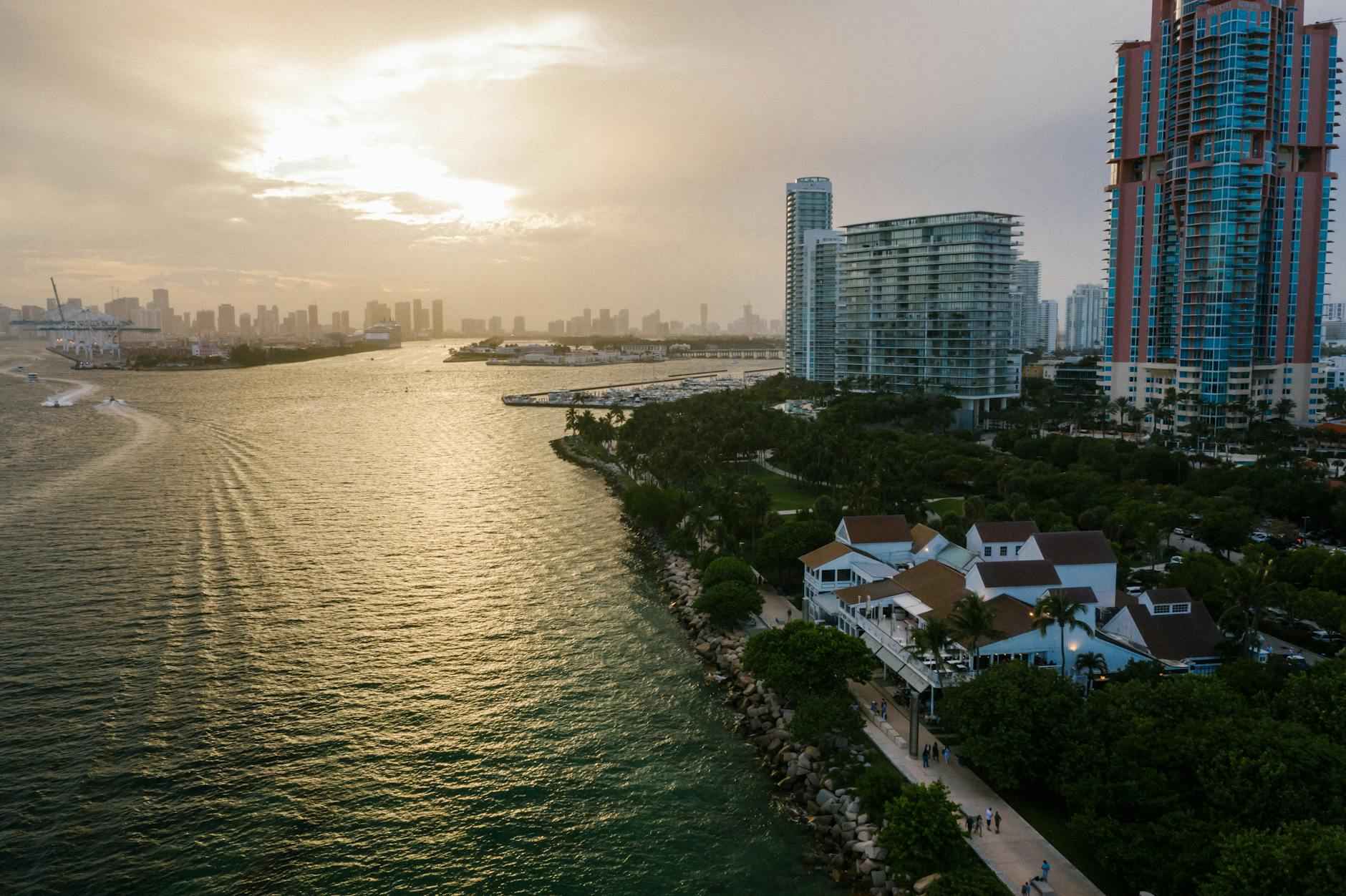
The Players in the Controversy
In the heart of Miami, a significant development project has ignited a heated debate, drawing in a diverse array of stakeholders. At the center of this controversy are developers with ambitious plans, local officials navigating the complexities of urban growth, and community advocates fiercely protecting their neighborhoods. Understanding these key figures is essential to grasp the nuances of the situation and the implications it carries for the future of urban development in the area.
The Miami development project is not merely a construction endeavor; it is a microcosm of broader societal dynamics. The main players include:
- Developers: Spearheaded by a consortium with ties to high-profile figures, these developers envision a transformative project aimed at revitalizing the area and boosting the local economy.
- Local Officials: City planners and elected representatives find themselves at a crossroads, balancing the potential economic benefits of the project against the concerns of their constituents.
- Community Advocates: Grassroots organizations and concerned residents are vocal about preserving the character of their neighborhoods, often mobilizing to voice their opinions in public forums.
The interplay among these groups creates a complex narrative, where each player’s motives and concerns must be understood to appreciate the full scope of the controversy.
As the project was unveiled, community reactions were swift and varied. Many residents expressed deep-seated fears about the potential for increased traffic, loss of green spaces, and the overall impact on local wildlife. For instance, during a town hall meeting, a resident shared a personal story about her children playing in a nearby park, emphasizing how critical these spaces are for community cohesion and well-being.
In contrast, the developers presented a contrasting narrative. They argued that the project would not only create jobs but also enhance local infrastructure, bringing much-needed resources to the community. “We see this as an opportunity for growth,” one developer stated, highlighting the potential for economic revitalization. However, this optimistic vision was met with skepticism, as many community members questioned whether the promised benefits would materialize or if they would be overshadowed by the project’s drawbacks.
The local government’s stance has been pivotal in shaping the project’s trajectory. City officials have been tasked with navigating the delicate balance between fostering economic development and addressing the concerns of their constituents. Public hearings became a platform for passionate discourse, with officials often finding themselves in the line of fire from residents demanding accountability and transparency.
The political implications of this development extend beyond Miami. As national media outlets began covering the controversy, the project became emblematic of larger issues surrounding urban development, gentrification, and the influence of political figures in local governance. This attention has prompted discussions about the ethical responsibilities of developers and the role of elected officials in representing the interests of their constituents.
In the midst of these discussions, experts have weighed in, emphasizing the need for sustainable practices in urban planning. Environmental advocates have raised alarms about the ecological impact of the development, stressing the importance of conducting comprehensive environmental assessments to protect local wildlife habitats. “We must prioritize sustainability and community input,” one environmental scientist remarked, highlighting the critical need for responsible development practices.
As the project moves forward, the ongoing community engagement has sparked a wave of activism, with local groups organizing rallies and forums to ensure that residents’ voices are heard. Grassroots movements are emerging, advocating for transparency and accountability in the development process, reflecting a growing desire for civic participation in local governance.
The unfolding events in Miami may set a precedent for future urban development projects, raising essential questions about how communities can effectively engage with developers and local governments. As the dialogue continues, the outcome of this project will likely influence urban planning practices and community relations in cities across the nation.
In conclusion, the Miami development project serves as a compelling case study in the complexities of urban growth, highlighting the need for collaboration among developers, local officials, and community advocates. As stakeholders navigate this intricate landscape, the importance of dialogue and understanding cannot be overstated. The future of Miami’s neighborhoods hangs in the balance, and the path forward will require thoughtful engagement from all parties involved.
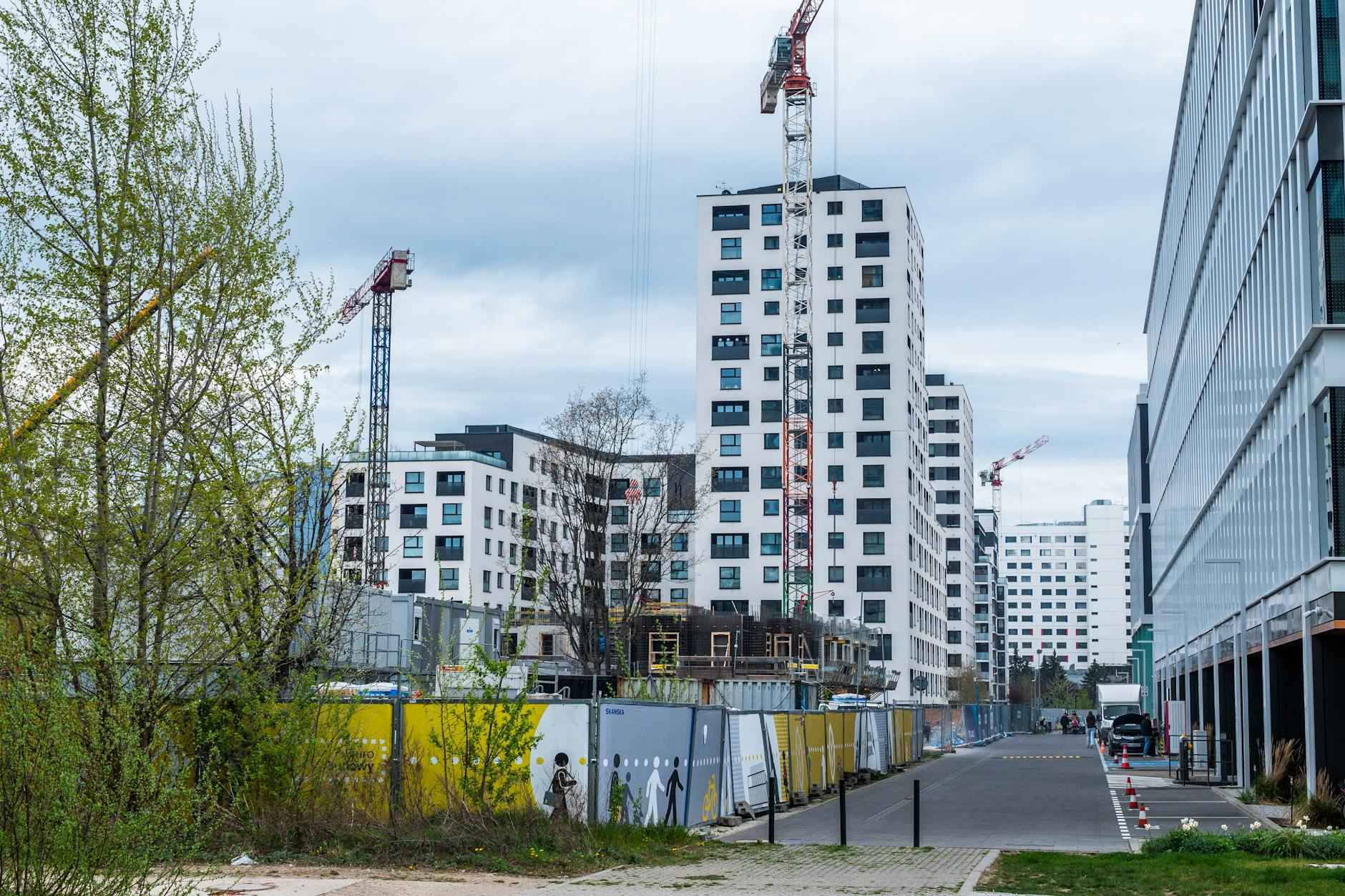
Timeline of Events
The recent approval of a significant development project in Miami, linked to former President Donald Trump, has stirred a whirlwind of emotions and reactions from various stakeholders. This project, which promises to reshape parts of the city, has not only raised questions about urban development but has also highlighted the complex interplay between local governance, community interests, and national political narratives. Understanding the timeline of events leading up to this approval is crucial in grasping the multifaceted nature of the controversy.
The journey began in early 2022 when the developers submitted their proposal to the Miami city council. This marked the start of a heated debate, as local residents quickly became aware of the potential implications for their neighborhoods. Many expressed concerns over issues such as increased traffic congestion, the potential loss of green spaces, and the overall character of the community. One resident, Maria Gonzalez, voiced her fears during a public forum, stating, “We love our neighborhood; it’s our home. We worry about what this development will do to our way of life.”
As the proposal gained traction, community meetings were organized to discuss the project. These gatherings became a platform for residents to voice their opinions, with some applauding the potential for economic growth while others vehemently opposed it. The developers, in response, painted a picture of revitalization, arguing that the project would generate jobs and improve local infrastructure. However, skepticism remained high among community members, who felt their concerns were being overlooked.
The approval process unfolded over several months, characterized by public hearings and intense scrutiny from both local officials and residents. During these hearings, stakeholders had the opportunity to present their views, leading to a rich tapestry of opinions that shaped the narrative surrounding the project. Local government officials found themselves in a challenging position, as they navigated between the developers’ promises and the community’s apprehensions.
In a particularly heated session, city council members were faced with passionate testimonies from environmental advocates who raised alarms about the potential ecological impact of the development. They emphasized the importance of sustainable practices, arguing that the project could disrupt local wildlife habitats and degrade the environment. “We must consider the long-term consequences of our decisions,” remarked Dr. Emily Carter, an environmental scientist, during one of the hearings. “This development could set a dangerous precedent for future projects in our city.”
Despite the opposition, the developers maintained their stance, asserting that the project would incorporate green technologies and sustainable practices. They presented a detailed plan that included green spaces and energy-efficient buildings, hoping to alleviate some of the community’s concerns. However, trust remained a significant hurdle, as many residents doubted the developers’ commitment to their promises.
As the approval process progressed, the political implications of the development became increasingly apparent. The project attracted national media attention, with various outlets highlighting the controversial aspects of Trump’s involvement. This attention reflected broader societal divisions regarding his legacy and influence in urban development. Local officials were aware that their decisions could resonate far beyond Miami, potentially impacting national conversations about gentrification and the role of political figures in local projects.
The controversy also ignited a wave of community activism. Grassroots movements emerged, advocating for transparency and accountability in the development process. Activists organized rallies, forums, and social media campaigns aimed at ensuring that residents’ voices were heard in the decision-making process. “This is not just about a building; it’s about our community’s future,” stated activist James Lee during a rally. “We need to stand together to protect our homes and our environment.”
As the project neared its final approval, tensions remained high. The city council ultimately voted in favor of the development, citing the potential economic benefits and the promise of community engagement from the developers. However, the decision left many residents feeling unheard and frustrated, as they grappled with the implications of the project on their lives.
The unfolding events surrounding the Trump development in Miami serve as a case study in the complexities of urban development. They highlight the need for ongoing dialogue between developers, local officials, and community members to ensure that all voices are considered in the decision-making process. As Miami moves forward, the lessons learned from this controversy may shape the future of urban development in the city and beyond.
Initial Proposal Submission
The recent development proposal in Miami, linked to former President Donald Trump, has ignited a passionate debate among local residents and stakeholders. The project, which promises to reshape the urban landscape, has raised significant concerns about its potential impact on the community. As the proposal was submitted, it quickly became a focal point for discussions about economic growth, environmental sustainability, and community identity.
From the moment the development proposal was unveiled, local residents expressed a mix of skepticism and outright opposition. Many voiced fears regarding the implications of increased traffic, potential environmental degradation, and the risk of altering the neighborhood’s character. A resident, Maria Gonzalez, shared her apprehension, stating, “We love our community for its charm and character. This development could change everything we cherish.”
In public forums, community members passionately articulated their concerns. Traffic congestion was a recurring theme, with many residents worrying about the strain on local infrastructure. “We already struggle with rush hour,” noted James, a local business owner. “Adding more traffic would be a nightmare.” Additionally, environmental advocates raised alarms about the potential disruption to local wildlife habitats, emphasizing the need for thorough ecological assessments before any construction begins.
In stark contrast to community fears, the developers presented a vision of revitalization and economic opportunity. They argued that the project would create jobs, enhance local infrastructure, and ultimately benefit the community. “This development isn’t just about building structures; it’s about building a future,” asserted the lead developer during a public meeting. Supporters of the project highlighted the potential for increased tax revenue and improved amenities, painting a picture of a thriving urban environment.
However, the promises of economic growth were met with skepticism. Critics questioned whether the benefits would truly reach the residents or if they would primarily serve the interests of developers and investors. “We need to ensure that our voices are included in these discussions,” emphasized community activist Sarah Lee. “It’s not just about profits; it’s about people.”
The journey toward approval was marked by a series of public hearings and intense scrutiny. Local government officials played a pivotal role in this process, with their support or opposition significantly impacting community sentiment. As the hearings unfolded, a diverse array of stakeholders, including environmentalists, business owners, and concerned citizens, had the opportunity to voice their opinions.
| Date | Event | Stakeholders Involved |
|---|---|---|
| January 15, 2023 | Initial Proposal Submission | Developers, Local Officials |
| February 5, 2023 | First Public Hearing | Residents, Environmental Advocates |
| March 10, 2023 | Community Forum | Local Businesses, Activists |
| April 20, 2023 | Final Approval Vote | City Council, Developers |
As the approval vote approached, tensions escalated. Community activists organized rallies, demanding transparency and accountability in the decision-making process. “We want our leaders to listen to us,” said activist David Chen. “This is our home, and we deserve a say in its future.” The outpouring of civic engagement underscored a growing desire for residents to be actively involved in urban planning.
The media also played a significant role in shaping public perception. Coverage of the project highlighted the controversial aspects of Trump’s involvement, reflecting broader societal divisions over his legacy. News outlets reported on the passionate debates that unfolded in city council meetings, capturing the essence of a community grappling with the implications of such a significant development.
As the dust settled on the approval process, the implications of the development extended beyond Miami. The project has sparked national conversations about urban development, gentrification, and the influence of political figures in local projects. The ongoing narrative serves as a reminder of the critical balance between economic growth and community preservation.
In conclusion, the approval of this development in Miami is not merely a local issue but a reflection of broader societal challenges. As communities across the nation navigate the complexities of urban development, the Miami case serves as a poignant example of the need for inclusive dialogue, responsible planning, and a commitment to sustainability. The journey is far from over, and the voices of the community will continue to echo as they seek to shape the future of their neighborhoods.
Community Reactions
The recent approval of a significant development project in Miami, associated with former President Donald Trump, has ignited a firestorm of reactions from the local community. Residents have expressed a wide range of emotions, from deep skepticism to outright opposition, driven by concerns about the potential consequences of such a large-scale endeavor. Many fear that the project could lead to increased traffic congestion, environmental degradation, and a fundamental shift in the character of their beloved neighborhood. As discussions unfold, it becomes increasingly clear that this development is not just a matter of urban planning; it is a reflection of community values, aspirations, and anxieties about the future.
In the heart of Miami, where palm trees sway and the ocean breeze carries whispers of change, residents have taken to community forums and social media to voice their apprehensions. A local resident, Maria Gonzalez, shared her thoughts during a recent town hall meeting, stating, “We love our neighborhood for its charm and character. This development feels like a threat to everything we hold dear.” Her sentiments resonate with many who worry that the influx of new traffic could disrupt the tranquility of their streets, turning peaceful avenues into bustling thoroughfares.
Moreover, environmental advocates have raised alarms about the potential ecological impact of the development. Local wildlife habitats are at risk, and experts are urging for comprehensive environmental assessments before any construction begins. Dr. Sarah Thompson, an environmental biologist, emphasized, “It’s crucial that we consider the long-term effects on our ecosystem. Sustainable practices must guide any urban development to ensure we protect our natural resources.” The community’s call for responsible planning highlights a growing awareness of the delicate balance between development and environmental stewardship.
The developers, however, present a contrasting narrative. They argue that the project will serve as a catalyst for economic growth, promising job creation and enhanced local infrastructure. During a public forum, one developer passionately stated, “This project will revitalize the area, bringing in new businesses and opportunities for everyone.” While some residents acknowledge the potential benefits, others remain unconvinced, fearing that economic gains may come at the cost of their neighborhood’s identity.
A recent survey conducted among local residents revealed that 65% of participants are concerned about the impact of the development on their community’s character. Many expressed a desire for more transparency and engagement from the developers. “We want to be part of the conversation,” said John Ramirez, a long-time resident. “It’s our neighborhood, and we have a right to voice our opinions.” This sentiment underscores the importance of community engagement in the decision-making process, as residents seek to balance economic aspirations with the preservation of their unique way of life.
Local government officials find themselves at the center of this controversy, navigating the delicate interplay between development and community sentiment. Their decisions carry significant weight, influencing both the approval process and public perception. Some officials have voiced support for the project, citing its potential economic benefits, while others have expressed reservations, echoing the concerns raised by constituents. The divergent views within local government reflect the broader societal divisions over urban development and the role of political figures in shaping community landscapes.
In response to the growing discontent, grassroots movements have emerged, advocating for increased transparency and accountability in the development process. Activists have organized rallies and community forums, creating a platform for residents to share their stories and concerns. The passion displayed by these activists is palpable, as they strive to ensure that the voices of the community are heard loud and clear. “We are not against development; we just want it to be done right,” said activist Emily Chen during a recent rally, capturing the essence of the community’s demands.
The unfolding events in Miami serve as a microcosm of the broader challenges faced by communities nationwide. As urban development projects continue to reshape neighborhoods, the question arises: how can communities effectively engage with developers and local governments to ensure their needs and values are prioritized? The Miami controversy highlights the necessity for open dialogue, collaboration, and a commitment to sustainable practices that honor both economic growth and environmental integrity.
As the debate continues, it is clear that the future of urban development in Miami—and beyond—hinges on the ability of communities to assert their influence and advocate for their interests. The stakes are high, and the outcome will undoubtedly shape the landscape of Miami for generations to come.
Developer’s Vision
The recent approval of a major development project in Miami, associated with former President Donald Trump, has ignited a passionate debate among community members, local officials, and developers. The developers have painted a picture of economic revitalization, claiming the project will create jobs and improve infrastructure. However, this vision has been met with skepticism and concern from many residents, who worry about the potential ramifications on their neighborhoods and environment.
The developers assert that the project will be a catalyst for economic growth, promising to generate hundreds of jobs and stimulate local businesses. They argue that modern infrastructure improvements are essential for Miami’s future, projecting a vision where the community thrives economically. During public forums, developers highlighted the potential for enhanced public services, improved transportation systems, and increased tax revenue that could fund local initiatives. However, the community’s response has been less than enthusiastic. Many residents have taken to social media and local meetings to voice their fears regarding the project. Concerns about increased traffic congestion, potential environmental degradation, and the loss of the neighborhood’s unique character have dominated discussions. For instance, local resident Maria Gonzalez shared her worries, stating, “I want my children to grow up in a safe, clean environment, not one overshadowed by high-rises and traffic jams.” This sentiment resonates with many who feel that the developers’ promises may not outweigh the potential downsides.The approval process for the development was anything but straightforward. It was marked by a series of public hearings where community members had the opportunity to voice their opinions. These sessions became a battleground of sorts, with passionate arguments from both sides. Developers presented data and projections to support their claims, while community advocates pushed back with concerns about the project’s impact on local wildlife and ecosystems. In one particularly heated meeting, environmental activist Dr. Lisa Chen emphasized the need for a thorough environmental impact assessment. “We cannot prioritize economic growth at the expense of our natural resources,” she argued, highlighting the delicate balance between development and sustainability. This clash of perspectives has not only fueled local debates but has also attracted national media attention, bringing broader discussions about urban development and gentrification to the forefront.
| Key Issues Raised | Community Concerns | Developer Responses |
|---|---|---|
| Traffic Congestion | Increased daily traffic and longer commute times | Proposed new roadways and public transport options |
| Environmental Impact | Potential harm to local wildlife and ecosystems | Commitment to sustainable building practices |
| Neighborhood Character | Loss of community identity and local culture | Plans for community engagement and input |
In the face of these challenges, community activism has surged. Grassroots movements have emerged, fueled by a desire for transparency and accountability in the development process. Local activists have organized rallies and forums, ensuring that the voices of residents are not only heard but also considered in the decision-making process. One notable event was a community forum hosted by the advocacy group Miami Voices, where residents shared personal stories about their connection to the land and the importance of preserving local heritage. Activist James Rivera remarked, “We need to stand together to protect our homes and our future. Development should benefit the community, not just the developers.” This collective action highlights a growing trend where residents are increasingly engaged in discussions about urban planning and development.The outcome of this controversy will likely set a precedent for future urban development projects in Miami and beyond. As communities grapple with the complexities of growth, the importance of civic participation cannot be overstated. Engaging residents in meaningful dialogue and ensuring their concerns are addressed will be crucial for fostering trust between developers and the communities they aim to serve.In conclusion, while the developers present a vision of economic growth and revitalization, the community’s concerns cannot be overlooked. The ongoing debate underscores the need for a balanced approach to urban development that prioritizes both economic progress and the well-being of local residents. As Miami navigates this contentious landscape, the lessons learned from this project may shape the future of urban development across the nation, highlighting the critical role of community engagement in ensuring sustainable and equitable growth.
Approval Process
The recent approval process for the Trump-linked development project in Miami was a profound event that captivated the attention of the public and stakeholders alike. It was not just a matter of greenlighting a construction project; it represented a complex interplay of community interests, political dynamics, and environmental concerns. Throughout this process, diverse voices contributed to the narrative, shaping perceptions and outcomes in significant ways.
At the heart of the approval process were public hearings, where community members, local officials, and environmental advocates gathered to express their opinions. These forums became a platform for passionate discourse, with residents articulating their fears and hopes regarding the development. For many, it was a chance to stand up for their neighborhood, which they felt was under threat from rapid urbanization.
During these hearings, the atmosphere was charged with emotion. Residents shared personal stories about their lives in the community, highlighting the importance of preserving the neighborhood’s character. One elderly resident recalled, “I’ve lived here for over 40 years. This is my home, and I fear what this development will do to it.” Such testimonies underscored the deep connections people have to their environment and the stakes involved in the decision-making process.
On the other side, developers presented a vision of progress and economic revitalization, arguing that the project would create jobs and improve infrastructure. This perspective, however, was met with skepticism. Many community members worried that the promised benefits would not materialize or that they would come at too high a cost—namely, the loss of their beloved neighborhood.
The approval process was characterized by intense scrutiny from various stakeholders, including local government officials, environmentalists, and civic organizations. The political implications of the project were significant, as it involved high-profile figures and raised questions about the influence of powerful developers in local governance. The involvement of former President Trump added another layer of complexity, drawing national media attention and dividing public opinion.
Local officials found themselves at a crossroads, balancing the demands of constituents with the allure of economic development. Some voiced strong support for the project, believing it would bring necessary investment to the area. Others, however, were more cautious, recognizing the potential backlash from constituents who feared losing their homes and neighborhoods to gentrification.
As the hearings progressed, it became clear that the outcome would hinge on who could mobilize their supporters effectively. Activist groups organized rallies and campaigns to ensure that community voices were heard. The grassroots movements that emerged were not just about opposing the development; they represented a broader desire for transparency and accountability in local governance.
Environmental advocates played a crucial role in the discourse surrounding the approval process. They raised alarms about the potential ecological impact of the development, emphasizing the need for thorough environmental assessments. Concerns about local wildlife habitats and the long-term sustainability of urban development were at the forefront of discussions. Experts warned that without careful planning, the project could lead to irreversible damage to the environment.
One environmental scientist noted, “We must consider the long-term effects of our decisions. Development should not come at the expense of our natural resources.” This sentiment resonated with many community members who were increasingly aware of the importance of sustainable practices in urban planning.
The implications of this approval process extend beyond Miami; they set a precedent for future urban development projects across the country. How communities engage with developers and local governments will be crucial in shaping the landscapes of our cities. The Miami development saga serves as a case study in the complexities of urban growth, illustrating the need for a balanced approach that considers economic, environmental, and social factors.
In conclusion, the approval process for the Trump Miami development was a microcosm of the larger struggles facing urban communities today. It highlighted the necessity of dialogue among stakeholders and the importance of community engagement in decision-making processes. As residents and activists continue to advocate for their neighborhoods, the lessons learned from this controversy will undoubtedly influence future projects and the way communities navigate the challenges of growth and change.
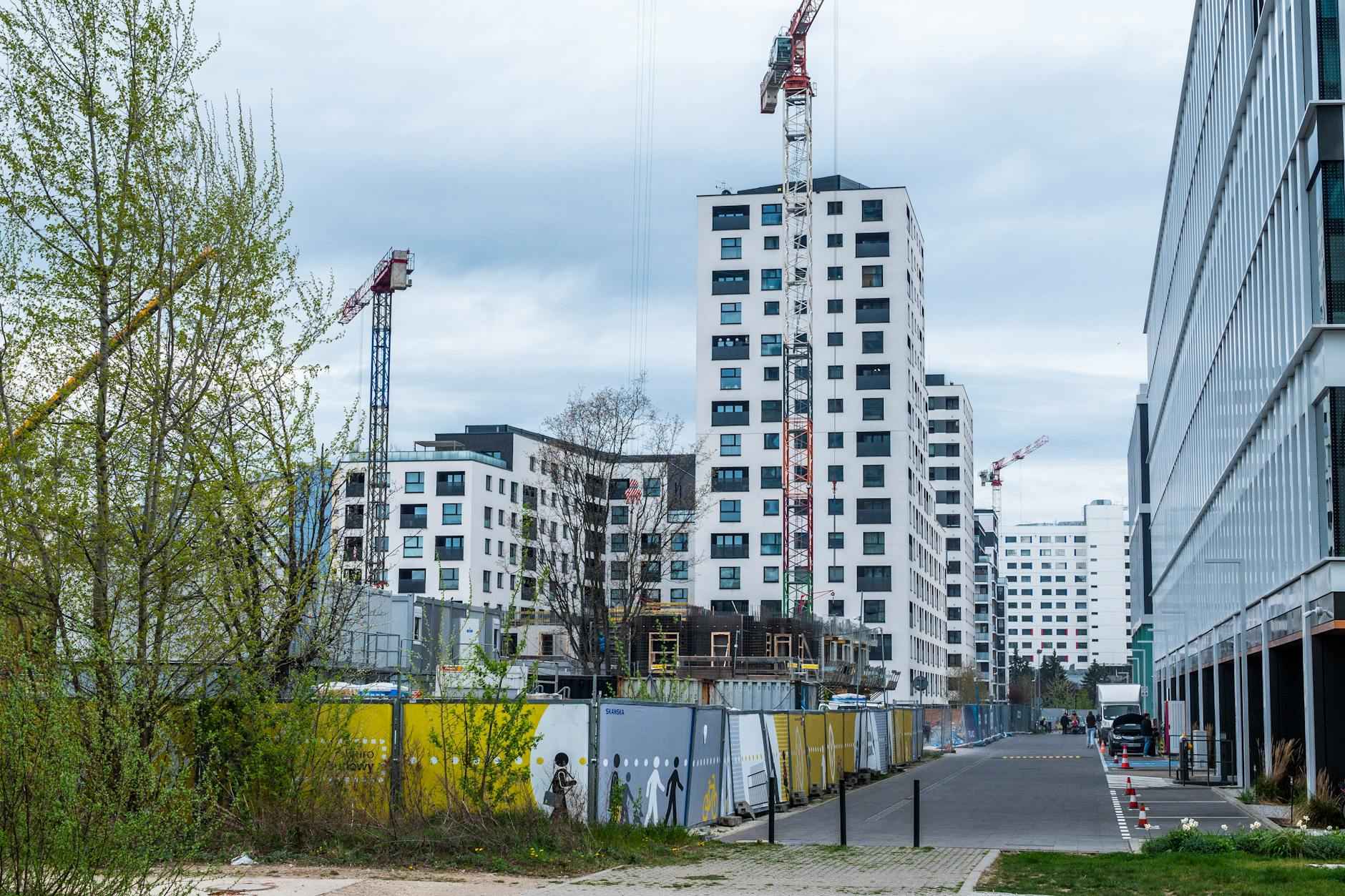
Political Implications of the Development
The recent approval of a significant development project in Miami, closely associated with former President Donald Trump, has ignited a firestorm of debate that resonates far beyond the city’s borders. This decision has become a focal point in national discussions surrounding urban development, the contentious issue of gentrification, and the influence of political figures in local projects. As Miami grapples with the implications of this approval, the voices of community members, activists, and political leaders are shaping a narrative that is both complex and revealing.
At its core, the approval of this development project represents more than just a local decision; it embodies a clash of values and priorities that reflect broader societal tensions. Urban development often serves as a microcosm for larger issues such as economic disparity and community identity. As cities evolve, the push for modernization frequently collides with the preservation of local culture and community integrity. The voices of residents, particularly those from marginalized communities, have emerged as crucial players in this narrative.
Many community members have expressed deep concerns about the potential for gentrification, fearing that their neighborhoods may transform beyond recognition. This fear is not unfounded; similar developments in other cities have led to rising property values and displacement of long-time residents. The emotional weight of these concerns is palpable. For instance, Maria, a local resident who has lived in her neighborhood for over two decades, shared her anxiety about the potential changes: “I worry that my home will no longer feel like home. The community we built here is at risk of being erased.”
The political implications of this development extend to the very fabric of local governance. The role of political figures in supporting or opposing such projects can significantly sway public opinion and impact future elections. Local government officials have found themselves at a crossroads, balancing the allure of economic growth against the needs and desires of their constituents. Many have faced pressure from both the development community, which touts the promise of job creation and infrastructure improvements, and from residents advocating for sustainable practices and community preservation.
In public forums, community advocates have rallied to voice their concerns, demanding transparency and accountability in the decision-making process. The emergence of grassroots movements has highlighted a growing desire for civic participation. Activists have organized protests and community meetings, ensuring that the voices of residents are not just heard but amplified. This engagement reflects a broader trend in urban areas where communities are increasingly asserting their rights to shape the development that affects their lives.
The Miami development controversy is not an isolated incident; it may set a precedent for future urban development projects across the nation. As cities continue to grow and evolve, the balance between economic development and community needs will remain a contentious issue. The outcomes of this project could influence how similar developments are approached in other regions, raising questions about the role of community engagement in local governance.
Experts suggest that fostering a collaborative environment between developers, local governments, and community members is essential for sustainable urban growth. Dr. Emily Carter, an urban planning expert, emphasizes, “It’s crucial for developers to recognize the importance of community input. Engaging with residents not only builds trust but can also lead to better outcomes for everyone involved.”
As Miami navigates this complex landscape, the ongoing dialogue surrounding the development approval will undoubtedly shape the future of urban planning in the city and beyond. The stakes are high, and the implications of this project will resonate for years to come. The intersection of politics, community, and development is a delicate balance, one that requires careful consideration and a commitment to inclusivity.
In conclusion, the political ramifications of the Miami development approval are profound, influencing national conversations about urban development and gentrification. As the community continues to engage and advocate for their interests, they are not only shaping the future of their neighborhoods but also contributing to a larger dialogue about the role of politics in urban spaces. The outcome of this controversy may well serve as a bellwether for how cities across the nation approach similar challenges in the years to come.
Local Government’s Stance
The approval process for the recent Miami development project linked to former President Donald Trump has become a focal point of contention and debate, particularly regarding the role of local government officials. Their influence, whether supportive or oppositional, has proven to be a decisive factor in shaping both the outcome of the project and the prevailing sentiments within the community. As residents grapple with the implications of this development, it becomes clear that local governance is not just a bureaucratic function but a dynamic interplay of interests, emotions, and community values.
Local government officials are often seen as the gatekeepers of community interests. In Miami, the recent development proposal has highlighted the intricate balance these officials must maintain between economic growth and community welfare. The support or opposition of these officials can sway public opinion and ultimately determine the fate of significant projects. For instance, during public hearings, officials were tasked with listening to constituents’ concerns, ranging from fears of traffic congestion to worries about environmental degradation.
One local council member, who wishes to remain anonymous, shared their perspective: “We are here to represent the community, and every voice matters. It’s not just about what the developers want; it’s about what the residents need.” This sentiment echoes the feelings of many community members who feel their voices are often drowned out by the louder, more influential voices of developers and political figures.
As the development proposal progressed through the approval process, community sentiment played a crucial role. Many residents expressed outrage and concern over the potential changes to their neighborhoods. For example, a local resident, Maria Gonzalez, passionately voiced her worries during a public forum: “This is our home. We don’t want it to become just another tourist trap. We need to protect our community’s character.” Her words resonated with many, highlighting the emotional stakes involved in the decision-making process.
In response to the growing opposition, local officials found themselves in a challenging position. They had to weigh the economic benefits touted by the developers against the palpable fears of their constituents. This balancing act is not unique to Miami; it reflects a broader trend in urban development where local governments must navigate complex relationships between developers, residents, and environmental advocates.
Transparency and accountability have emerged as critical themes in the ongoing discussions surrounding the project. Activists have called for more open dialogues between local government officials and the community, pushing for a governance model that prioritizes public engagement. This desire for transparency was evident during community meetings, where residents sought clarity on how decisions were being made and who was influencing those decisions.
One local activist, John Rivers, emphasized the importance of this transparency: “When people feel included in the process, it fosters trust. Without it, you create a divide that can lead to resentment and opposition.” His perspective captures the essence of community engagement, suggesting that a collaborative approach could lead to more harmonious outcomes for all parties involved.
| Key Stakeholders | Roles and Responsibilities |
|---|---|
| Local Government Officials | Facilitate public hearings, represent community interests, and make decisions on development proposals. |
| Developers | Propose projects, outline economic benefits, and engage with local officials. |
| Community Residents | Express concerns, provide feedback, and influence local governance through activism. |
| Environmental Advocates | Raise awareness about ecological impacts and advocate for sustainable practices. |
The ongoing Miami development saga serves as a reminder of the complex interplay between local governance and community dynamics. It underscores the necessity for local officials to not only listen but to actively engage with their constituents. As the project moves forward, the lessons learned from this controversy may well shape future urban development strategies, emphasizing the need for a more inclusive approach that respects the voices of all stakeholders.
In conclusion, the approval process for the Miami development linked to Donald Trump illustrates the vital role of local government officials in navigating the intricate landscape of community interests, economic aspirations, and environmental concerns. Their ability to foster dialogue, ensure transparency, and uphold accountability will be essential in addressing the challenges posed by such significant projects in the future, ultimately determining the trajectory of urban development in Miami and beyond.
National Attention and Media Coverage
The recent approval of a major development project in Miami, closely associated with former President Donald Trump, has ignited a firestorm of debate and discussion across the nation. As the project unfolds, it has become a focal point reflecting deeper societal divisions regarding Trump’s legacy and influence. Various media outlets have taken a keen interest in the controversial aspects of this development, amplifying the voices of both supporters and detractors. The project has not only drawn local attention but has also captured national headlines, illustrating the complexities of urban development intertwined with political narratives.
The dynamics surrounding Trump’s involvement in the Miami development project are intricate and multifaceted. Many view this project as a microcosm of the broader political landscape in America, where urban development intersects with partisan politics. Advocates argue that Trump’s name attached to the project symbolizes a promise of revitalization and economic growth, while critics see it as a blatant example of cronyism and disregard for community needs.
Local residents have expressed a range of emotions concerning the project. For some, the prospect of new jobs and improved infrastructure is enticing. However, others are apprehensive, fearing that the development could lead to increased traffic congestion, environmental degradation, and a loss of the neighborhood’s unique character. This dichotomy in public sentiment has fueled passionate debates at community meetings, where residents have voiced their concerns and aspirations.
As the project progressed through the approval process, public hearings became a platform for community engagement. Local officials, developers, and residents gathered to discuss the implications of the project, creating a dynamic environment where various perspectives clashed. The local government’s stance played a crucial role in shaping the outcome, as their support or opposition significantly influenced community sentiment. The decision-making process, laden with political undertones, highlighted the challenges of balancing economic interests with community welfare.
The media’s role in this controversy cannot be understated. National outlets have been quick to highlight the project’s contentious aspects, often framing it within the context of Trump’s polarizing presidency. This coverage has sparked discussions not only about the development itself but also about the broader implications for urban planning and gentrification across the country.
For instance, a recent article in a prominent newspaper emphasized the environmental concerns raised by local activists, who argue that the project threatens local wildlife and ecosystems. These advocates have called for comprehensive environmental assessments before moving forward, insisting that sustainable practices must be prioritized in urban development. The media’s focus on these issues has brought them to the forefront of public discourse, urging both developers and local officials to consider the long-term implications of their decisions.
Moreover, the narrative surrounding Trump’s involvement has further polarized opinions. Supporters view the project as a beacon of progress, while detractors see it as a reflection of the former president’s controversial legacy. This division is emblematic of the broader societal rifts that have emerged in recent years, making the Miami development a case study in the intersection of politics, community, and urban development.
In response to the unfolding events, grassroots movements have gained momentum, advocating for transparency and accountability in the development process. Local activists have organized rallies, town halls, and forums to ensure that residents’ voices are heard. These efforts reflect a growing desire for civic participation in local governance, as community members seek to reclaim their agency in shaping the future of their neighborhoods.
One local resident, Maria Gonzalez, shared her experience at a recent community meeting: “We want to be part of the conversation. This is our home, and we deserve a say in what happens here.” Her sentiment resonates with many who feel marginalized in the decision-making process. The activism surrounding the Miami development has not only empowered residents but has also highlighted the importance of community engagement in urban planning.
As the project continues to evolve, the implications of its approval extend far beyond Miami. It raises critical questions about how communities can effectively engage with developers and local governments to ensure that their needs are met. The unfolding narrative serves as a reminder that urban development is not just about buildings and infrastructure; it is about the people who inhabit these spaces and the legacies they wish to leave behind.
In conclusion, the Miami development project, intertwined with Trump’s controversial legacy, has become a catalyst for broader discussions about urban development, community engagement, and political accountability. As national media coverage continues to spotlight this issue, it is clear that the implications of this project will resonate far beyond the city limits, shaping conversations about the future of urban planning in America.
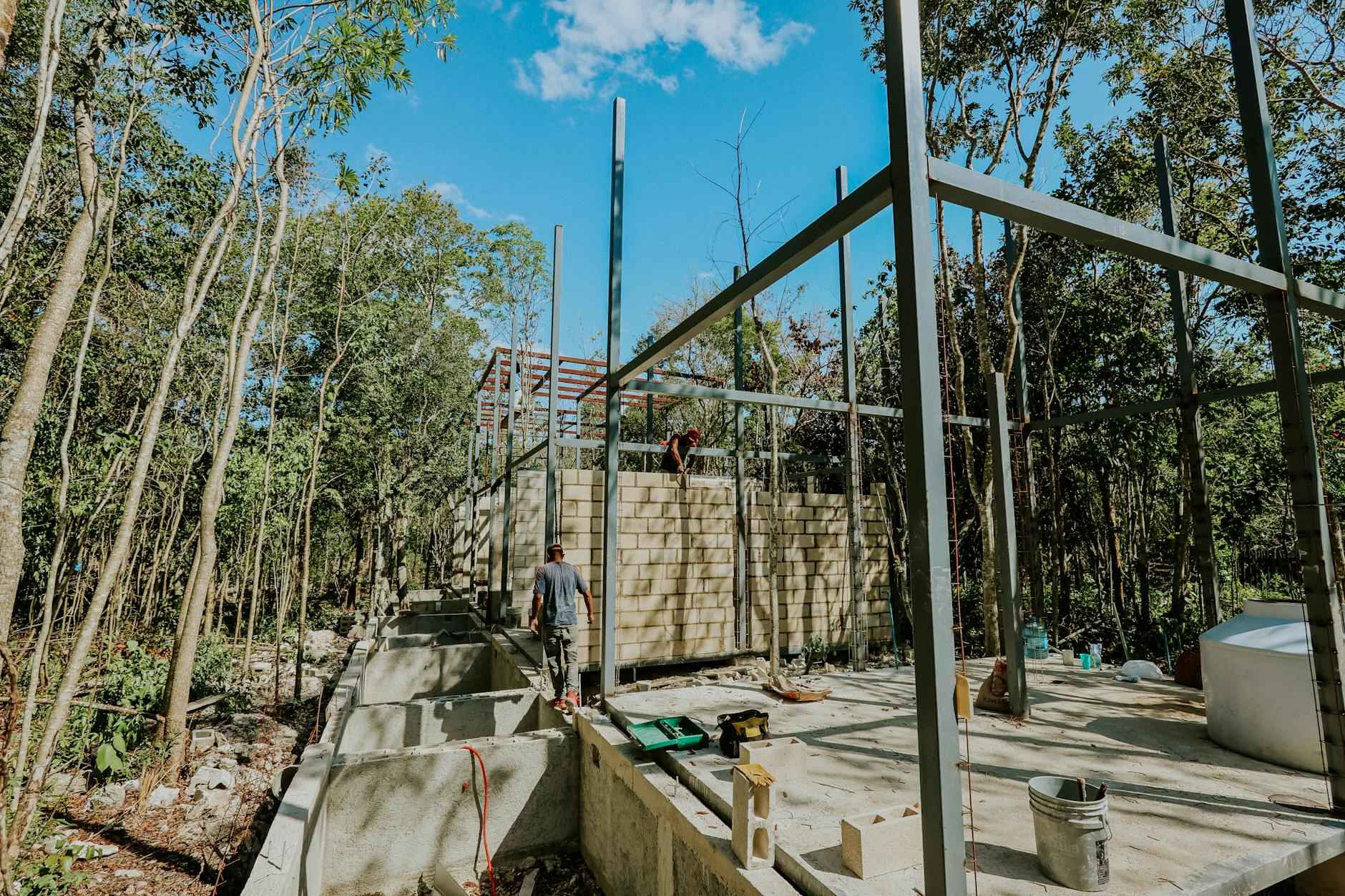
Environmental Concerns Raised
The recent approval of a significant development project in Miami, associated with former President Donald Trump, has ignited a passionate discourse among various stakeholders, particularly environmental advocates. These advocates have raised serious concerns regarding the potential ecological repercussions of the project, stressing the necessity for sustainable practices and the inclusion of community insights in urban planning processes. As the debate unfolds, it reveals the delicate balance between economic ambitions and environmental stewardship, a theme that resonates deeply within many communities.
In urban development, the voices of local residents are crucial. Community engagement is not just a formality; it is a vital component that can shape the trajectory of a project. Advocates argue that the local populace should have a say in developments that could alter their neighborhoods forever. For instance, a resident named Maria, who has lived in Miami for over 20 years, expressed her fears about the project: “We need to ensure that our community’s needs are prioritized over profit. This is not just about buildings; it’s about our homes and our environment.”
This sentiment echoes through community meetings and public forums where residents gather to voice their concerns. The development project has prompted discussions about potential increases in traffic, the risk of environmental degradation, and the overall impact on the character of the neighborhood. Many fear that the project may favor developers and investors over the existing community, leading to a loss of cultural identity and local heritage.
Environmental advocates have been vocal about the potential ecological impact of the development. They emphasize the importance of conducting thorough environmental assessments before any construction begins. Experts highlight that Miami’s unique ecosystems, including wetlands and coastal habitats, could be severely disrupted. According to Dr. Emily Carter, an environmental scientist, “Any large-scale development must consider the long-term effects on local wildlife and habitats. We cannot afford to overlook these critical aspects.”
Moreover, the advocates call for the adoption of sustainable practices that prioritize environmental health alongside economic growth. This includes utilizing green building techniques, preserving natural landscapes, and ensuring that any new infrastructure is designed to minimize ecological footprints. The push for sustainability is not merely an environmentalist’s dream; it is increasingly recognized as a necessity for the longevity of urban areas.
The controversy surrounding the Miami development has sparked a wave of activism and community engagement. Local groups have organized rallies, forums, and educational sessions to raise awareness about the implications of the project. These grassroots movements are not only advocating for transparency and accountability but also fostering a sense of solidarity among residents who are concerned about their future.
Activists have taken to social media, sharing stories and information to mobilize support. They emphasize that community input should be a cornerstone of urban planning, ensuring that developments reflect the needs and desires of those who will be most affected. This activism is a testament to the power of collective voices in shaping local governance.
As the debate continues, the question remains: how can communities effectively engage with developers and local governments to ensure that their needs are met? The unfolding events in Miami may serve as a model for future urban development projects, highlighting the importance of community involvement in decision-making processes.
In conclusion, the environmental concerns raised by advocates regarding the Miami development project underscore a broader conversation about sustainability and community engagement in urban planning. As cities grow and evolve, it is essential to find a balance between development and ecological preservation. The voices of residents must be heard, and their concerns taken seriously, to build a future that respects both the environment and the communities that inhabit it.
Impact on Local Wildlife
In recent discussions surrounding a significant development project in Miami associated with former President Donald Trump, a crucial concern has emerged regarding the potential impact on local wildlife habitats. Experts and environmental advocates have raised their voices, emphasizing the necessity for thorough environmental assessments prior to the initiation of such large-scale projects. This perspective is not merely an academic exercise; it reflects a growing awareness of the intricate balance between urban development and ecological preservation.
Miami is home to a diverse range of wildlife, including endangered species and unique ecosystems. The proposed development site, which spans several acres, is situated near critical habitats that support various flora and fauna. Experts argue that disruption of these habitats could lead to irreversible damage, not just for the wildlife but also for the community that relies on these natural resources.
According to Dr. Emily Carter, a renowned ecologist, “Every time we pave over a piece of land, we are not just losing trees; we are losing an entire ecosystem that has taken centuries to develop.” This sentiment resonates deeply with local residents who cherish the natural beauty and biodiversity that Miami offers.
In light of the potential risks, environmental advocates are calling for comprehensive environmental assessments (CEAs) to be conducted before any construction begins. These assessments are designed to evaluate the potential impacts of the project on local wildlife, air quality, and water resources. They serve as a critical tool in identifying risks and ensuring that mitigation strategies are put in place to protect vulnerable species.
Moreover, the public has a role to play in this process. Community forums have been organized, providing a platform for residents to voice their concerns and demand accountability from developers and local officials. During one such forum, a local resident passionately stated, “We cannot sacrifice our environment for the sake of profit. Our children deserve to inherit a world where they can experience nature, not just concrete.”
The implications of this development extend beyond just the immediate area. As urban sprawl continues to encroach upon natural habitats, the question arises: how can cities grow responsibly? Urban planners and environmentalists are increasingly advocating for sustainable practices that prioritize ecological health alongside economic development. This approach not only benefits wildlife but also enhances community resilience against climate change.
| Key Considerations | Impact on Wildlife | Community Benefits |
|---|---|---|
| Comprehensive Environmental Assessments | Identifies risks to local species | Promotes community involvement |
| Sustainable Development Practices | Minimizes habitat destruction | Enhances local quality of life |
| Community Engagement | Empowers local voices | Builds trust between developers and residents |
As the debate unfolds, it becomes clear that the future of urban development in Miami—and beyond—will hinge on the ability to balance growth with environmental stewardship. The voices of community members, experts, and advocates are vital in shaping a development paradigm that respects both human and ecological needs.
In conclusion, the discussions surrounding the Miami development project highlight a critical juncture in urban planning. With the potential disruption of local wildlife habitats at stake, the call for comprehensive environmental assessments is not just a procedural formality but a necessary step toward ensuring a sustainable future. The urgency of this issue serves as a reminder that the decisions made today will have lasting impacts on both the community and the environment, underscoring the importance of thoughtful, inclusive planning.
Long-term Sustainability
In recent discussions surrounding the Miami development project associated with former President Donald Trump, a pivotal theme has emerged: the necessity for . This conversation underscores the urgent need for a development strategy that harmonizes economic growth with environmental stewardship. Stakeholders, including local residents, developers, and environmental advocates, are grappling with the implications of this project, which has ignited a passionate debate about the future of urban development in Miami.
Long-term sustainability is not merely a buzzword; it represents a fundamental principle that guides how communities can grow without compromising their natural resources. The Miami development project has become a focal point for discussing how urban expansion can coexist with the preservation of the environment. Critics argue that unchecked development can lead to detrimental effects on local ecosystems, while proponents assert that responsible development can actually enhance local infrastructure and create jobs.
To illustrate this, consider the case of a local resident, Maria, who has lived in her neighborhood for over twenty years. She recalls the vibrant wildlife that once thrived in the area, from the fluttering butterflies to the chirping birds. However, Maria expresses her concern that the proposed development may disrupt these habitats, leading to a loss of biodiversity that has been a hallmark of her community. Her story highlights the emotional and ecological stakes involved in the ongoing discussions.
As the debate unfolds, it becomes clear that striking a balance between economic development and environmental responsibility is crucial. Advocates for the project argue that it promises significant economic benefits, including job creation and improved infrastructure. They point to the potential for increased tourism and local business growth as compelling reasons to move forward.
However, environmental advocates counter this narrative by emphasizing the importance of conducting thorough environmental assessments before proceeding with such large-scale projects. They argue that a comprehensive understanding of potential ecological impacts is essential for ensuring that economic benefits do not come at the expense of the environment. This perspective is echoed by environmental scientists who stress the need for data-driven decision-making in urban planning.
| Pros of Development | Cons of Development |
|---|---|
| Job Creation | Potential Habitat Destruction |
| Increased Local Business Revenue | Traffic Congestion |
| Improved Infrastructure | Loss of Community Character |
The table above summarizes some of the key arguments from both sides of the debate, illustrating the complexity of the situation. As local government officials weigh these factors, they must consider the long-term implications of their decisions on both the economy and the environment.
The controversy surrounding the Miami development has sparked a wave of community engagement. Local activists are mobilizing to ensure that residents’ voices are heard in the decision-making process. Rallies, public forums, and social media campaigns have become platforms for residents to express their concerns and advocate for a more sustainable approach to development.
Grassroots movements have emerged, emphasizing the need for transparency and accountability in the development process. These movements reflect a growing desire among community members to have a say in how their neighborhoods evolve. Activists argue that community input is essential in shaping a development plan that respects both economic needs and environmental integrity.
As the Miami development project progresses, it serves as a case study for other urban areas grappling with similar challenges. The outcomes of this project could set a precedent for how communities engage with developers and local governments in the future. By fostering a collaborative dialogue among stakeholders, it may be possible to create a model for sustainable development that prioritizes both economic and environmental health.
In conclusion, the discussions surrounding long-term sustainability in the context of the Miami development project highlight the intricate balance needed between growth and preservation. As stakeholders continue to voice their opinions, it is clear that the future of urban development will depend on a collective commitment to responsible practices that honor both the economy and the environment.
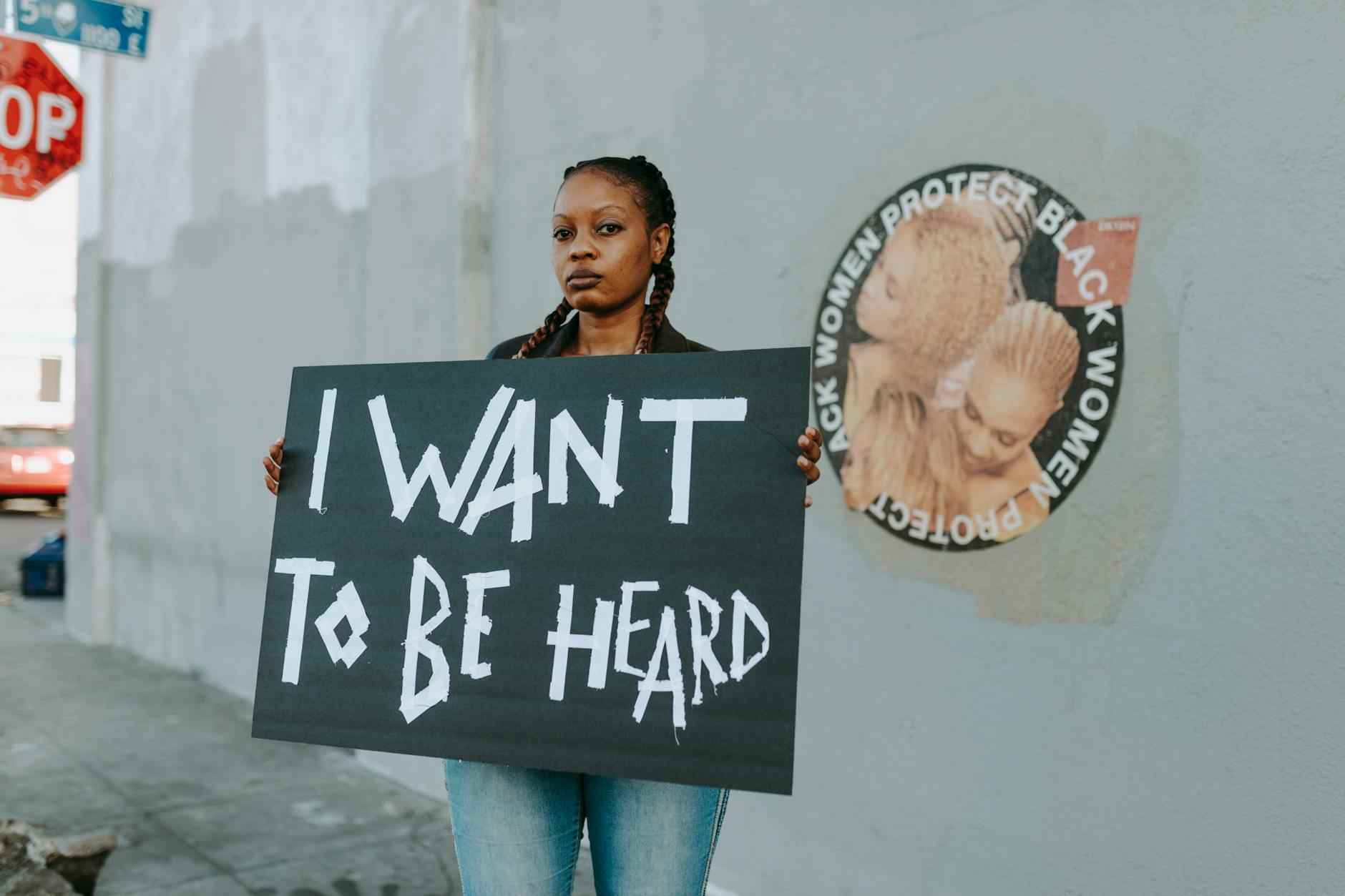
Community Engagement and Activism
The recent approval of a significant development project in Miami, linked to former President Donald Trump, has ignited a passionate response from the community. Local activists have mobilized, organizing rallies and forums to ensure that the voices of residents are not only heard but also considered in the decision-making process. This grassroots movement reflects a growing trend where community members are taking a stand against developments they believe may threaten their neighborhoods and quality of life.
In the heart of Miami, where the skyline is ever-changing, the announcement of the Trump-related development sent ripples through the community. Residents expressed a mix of skepticism and concern, fearing that the proposed project would lead to increased traffic congestion, environmental degradation, and a loss of the area’s unique character. The stakes are high, and the community’s response has underscored the importance of civic engagement in local governance.
As tensions rose, local activists sprang into action, determined to create a platform for residents to voice their concerns. Rallies were organized in public parks, where neighbors gathered to discuss their fears and hopes for the future of their community. These gatherings not only provided a space for dialogue but also fostered a sense of solidarity among residents. One participant, Maria Gonzalez, shared her experience: “We felt like we were being ignored, but coming together showed us that we could make a difference.” This sentiment resonated with many, highlighting the power of collective action.
Forums were held in community centers, inviting experts, local officials, and residents to engage in constructive discussions. Activists pushed for transparency in the development process, demanding that developers and local government officials address community concerns directly. The atmosphere was charged with emotion as people voiced their worries about the potential impact on local wildlife and the environment. “It’s not just about buildings; it’s about preserving our home,” remarked environmental advocate David Lee during one such forum.
Despite the challenges posed by powerful developers and political figures, the grassroots movement has gained traction. Activists have utilized social media platforms to amplify their message, reaching a broader audience and garnering support from outside the immediate community. Petitions circulated online quickly gathered thousands of signatures, demonstrating widespread opposition to the project.
However, the path is not without its hurdles. Activists often face pushback from developers who argue that the project will bring economic growth and jobs to the area. The developers paint a picture of revitalization, claiming that their plans will enhance local infrastructure and boost the economy. This narrative, though compelling, has been met with skepticism by many residents who fear that the benefits may not outweigh the costs.
Community members have taken it upon themselves to conduct research, gathering data on the potential environmental impacts of the development. They have called for comprehensive assessments to ensure that local wildlife and ecosystems are protected. The dialogue has evolved, with residents now demanding sustainable practices in urban planning that prioritize both economic and environmental health.
The unfolding events in Miami serve as a critical case study for urban development across the nation. The community’s activism raises important questions about how residents can effectively engage with developers and local governments. As the project moves forward, it is clear that the community will continue to push for accountability and transparency.
Furthermore, the implications of this controversy extend beyond Miami. It mirrors a national conversation about the role of political figures in local projects and the impact of urban development on community dynamics. The voices of residents, once marginalized, are now at the forefront of this debate, challenging the status quo and demanding a seat at the table.
In conclusion, the controversy surrounding the Trump Miami development project has catalyzed a significant wave of community engagement and activism. As residents unite to advocate for their rights and the future of their neighborhoods, they are not just fighting against a development; they are forging a path toward a more inclusive and sustainable approach to urban planning. The outcome of this struggle may very well set a precedent for how communities across the country engage with similar projects in the future.
Grassroots Movements
The recent approval of a significant development project in Miami, linked to former President Donald Trump, has ignited a heated debate among local residents and stakeholders. This situation encapsulates a broader movement towards civic engagement, with grassroots organizations advocating for transparency and accountability in the urban planning process. As communities increasingly seek to participate in governance, the dynamics of local development are shifting, reflecting a collective desire for a voice in decisions that impact their lives.
Grassroots movements have become a vital force in advocating for community interests, particularly in urban development. These movements are often spearheaded by local residents who are passionate about their neighborhoods and committed to ensuring that development projects align with community needs. For instance, in Miami, residents have come together to voice their concerns about the potential ramifications of the Trump-linked development, emphasizing the importance of civic participation in local governance.
One poignant example comes from a local resident, Maria, who recalls attending community meetings where she and her neighbors expressed their fears regarding increased traffic and environmental degradation. “It felt empowering to stand up and voice our concerns,” she said, reflecting on the unity among residents. This sentiment is echoed across various neighborhoods as citizens rally to demand more transparency in how development decisions are made.
Grassroots organizations are not just about protest; they play a crucial role in fostering dialogue between developers and the community. By organizing forums and public hearings, these groups create platforms for residents to engage directly with decision-makers, ensuring that their voices are heard. This engagement is essential, as it helps to bridge the gap between the community’s needs and the developers’ plans, creating a more inclusive approach to urban development.
Transparency has emerged as a critical demand from grassroots movements. Residents want to know how decisions are made and who benefits from new developments. This push for accountability is not merely about opposing projects; it’s about advocating for responsible development that prioritizes community welfare. As local activists have pointed out, “When we are kept in the dark, it’s easy for developers to prioritize profit over people.”
To illustrate this point, consider a recent public forum where community members raised questions about the environmental assessments conducted prior to the development’s approval. Many residents felt that the assessments were insufficient and did not adequately address potential impacts on local wildlife and ecosystems. This led to calls for more comprehensive studies and greater involvement from environmental experts in the planning process.
| Key Concerns Raised by Residents | Community Responses |
|---|---|
| Increased Traffic | Advocacy for improved public transportation options |
| Environmental Degradation | Demand for thorough ecological assessments |
| Neighborhood Character Changes | Calls for preserving local culture and history |
The ongoing development debate in Miami serves as a microcosm of a larger trend in urban areas across the nation. As cities grow and evolve, the need for sustainable practices becomes increasingly apparent. Grassroots movements are at the forefront of this conversation, pushing for development that not only meets economic goals but also respects the environment and enhances community well-being.
Experts argue that sustainable urban development should involve all stakeholders, including local residents, environmental advocates, and urban planners. “It’s about creating a shared vision for the future,” says Dr. Emily Johnson, an urban planning expert. “When communities are actively involved, we can create spaces that truly reflect the needs and desires of the people who live there.”
As Miami navigates the complexities of this development project, it is clear that grassroots movements will continue to play a pivotal role in shaping the city’s landscape. Their advocacy for transparency, accountability, and sustainability is not just about opposing change; it’s about fostering a collaborative environment where development can thrive alongside community values.
In conclusion, the rise of grassroots movements in Miami highlights a critical shift towards civic engagement in urban development. By demanding transparency and accountability, residents are not only influencing local governance but also setting a precedent for how communities can effectively engage with developers and local governments in the future. The unfolding events in Miami may serve as a blueprint for other cities facing similar challenges, demonstrating that when communities unite, their voices can lead to meaningful change.
Future of Urban Development
The recent controversy surrounding the approval of a major development project in Miami, linked to former President Donald Trump, has ignited a passionate debate about urban development and community engagement. This situation not only highlights the complex dynamics between developers, local governments, and residents but also poses significant questions about the future of urban planning in America. As communities grapple with the implications of such projects, it becomes increasingly clear that effective engagement is crucial for ensuring that the voices of local residents are heard and respected.
At the heart of this controversy are several key players: the developers, local officials, community advocates, and the residents themselves. Developers often present a vision of progress, promising economic growth and revitalization. However, local residents, who bear the brunt of these changes, frequently express concerns about the potential negative impacts on their neighborhoods. The local government, tasked with balancing these competing interests, finds itself in a challenging position.
In Miami, the developers behind the Trump-linked project argued that it would create jobs and enhance local infrastructure. They painted a picture of a thriving community benefiting from increased investment. Yet, many residents remained skeptical, fearing that such developments would lead to rising property values and displacement of long-time residents. This tension reflects a broader national conversation about gentrification and the role of wealth in shaping urban landscapes.
The timeline leading up to the approval of the development is crucial for understanding the unfolding events. The initial proposal submission sparked immediate reactions from the community, ranging from skepticism to outright opposition. Residents voiced fears about increased traffic, environmental degradation, and a loss of the neighborhood’s character. Public forums became battlegrounds for differing opinions, as community members rallied to express their concerns.
Despite the pushback, the approval process continued, marked by public hearings where stakeholders could voice their opinions. Local officials played a pivotal role, with their support or opposition significantly impacting the outcome. The media coverage surrounding the project further amplified the controversy, drawing national attention and reflecting the societal divisions over Trump’s influence. As the discussions unfolded, it became apparent that the project was not just about bricks and mortar; it was about the very essence of community identity and the future of urban development.
Amidst the heated debates, environmental advocates raised important concerns about the ecological impact of the development. The potential disruption of local wildlife habitats and the need for sustainable practices became focal points for activists. Experts emphasized the importance of conducting comprehensive environmental assessments before proceeding with such large-scale projects. The conversation around sustainability is critical, as it highlights the need for responsible development that balances economic growth with environmental stewardship.
As discussions about long-term sustainability continued, community members began to organize grassroots movements advocating for transparency and accountability in the development process. These efforts reflected a growing desire for civic participation in local governance, emphasizing that residents should have a say in decisions that affect their lives. The activism seen in Miami may very well set a precedent for future urban development projects across the country, signaling a shift toward greater community engagement.
In conclusion, the unfolding events in Miami have illuminated significant challenges and opportunities for urban development. As communities seek to engage effectively with developers and local governments, the lessons learned from this controversy will be invaluable. The need for open dialogue, transparency, and a commitment to sustainable practices will be essential in shaping the future of urban development. By fostering a collaborative environment, communities can ensure that their voices are not only heard but also integrated into the decision-making process, paving the way for developments that truly reflect the needs and aspirations of all stakeholders involved.














